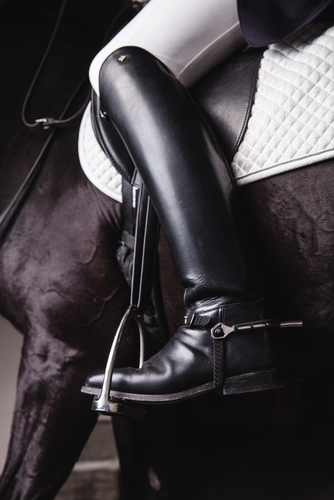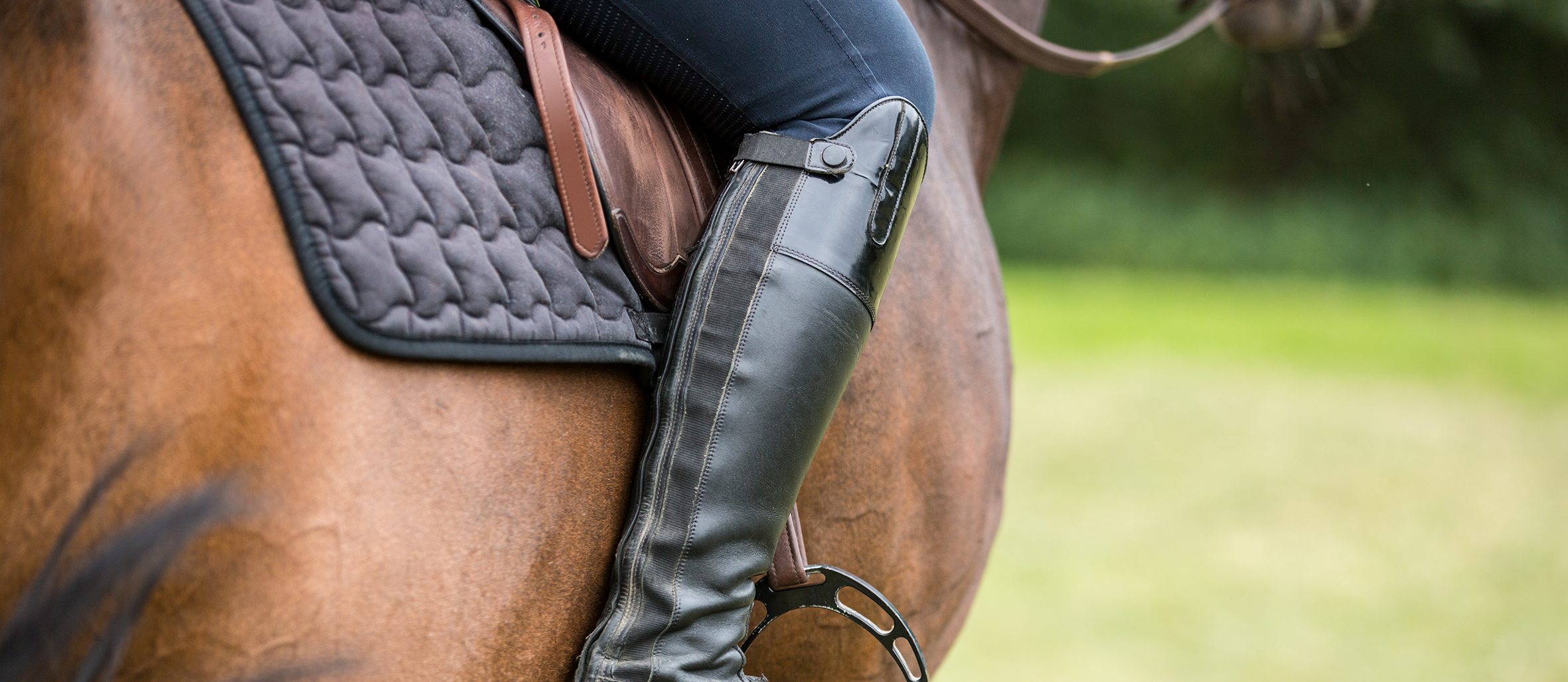You need a pair of riding boots. A pair that looks good and feels good.
Riding boots are just as essential to a safe and enjoyable horse ride as the right saddle and a bridle, so let’s dig into how to choose the best ones!
What to Consider When Buying New Riding Boots

- Design – boots come in a few different styles like jodhpur boots, paddock boots and long boots. There are also various fastenings to choose from (pull-on, a zip and laces), as well as considering the colour of the boot, although they typically come in a range of shades of black and brown. Occasionally you can find a glitzier version of a boot, so keep an eye out!
- Fit – long boots can come in different widths and lengths, for a more tailored fit. Try on as many styles as possible, and don’t forget to size up or down to find your preferred fit. When shopping online, use a measuring tape to take measurements of both of your legs while wearing jodhpurs or breeches and refer to the size chart for comparison.
- Material – boots are generally either leather, synthetic, or rubber. Leather softens with use and can last a very long time if treated well, but synthetic or rubber boots are generally more affordable and are often easy to clean – just wipe them off. Some boots might also have suede or stretch panels, which will ‘hug’ your leg to create a snug fit.
- Discipline – if you’re competing, find out if your boots are legal as those for British Dressage have to be discreet, muted colours – best leave your new custom turquoise riding boots at home next time you have a dressage test!
Which Style?
Horse riding boots come in short and long options – there are two standout long boots:
Field Boots
These have lacing at the front of the ankle making them more comfortable and making the fit more secure.
The lacing is almost always elasticated making it more flexible at the ankle and they are particularly popular in hunter/jumper disciplines.
Dress Boots
These are traditional full seat riding boots that have a highly contoured cut through the ankle and calf rather than the laces like the field boots. They’re often seen at dressage competitions.
Zip or Pull-on – Which Will Suit You?
Both of these types of boots are available with a pull-on, or a zip. The most common of these boots is a boot that has a hidden zip up the back of the calf. However, some boots have a zip that is up the front. Both of these versions will give you easy access to get your boots on and off.
The Importance of Size and Fit
The majority of manufacturers offer standard off the peg sizes for leg lengths and calf widths. You can also buy made-to-measure boots, but these tend to be on the pricier side.
It is very important that the boots fit well, otherwise the rider will not be comfortable. There’s nothing worse than a pair of boots that rubs.
As well as your foot size, you will need to take two other measurements:
- Your calf at the widest point.
- Foot (shoe or boot) length, measured from the back of the heel to the floor. Lower leg length, usually measured from the back of the knee to the floor.

When getting new boots fitted, wear jodhpurs and socks so you have an idea of how the boots are actually going to fit. Make sure that you fit both feet and calves – one is never the same as the other.
However, you should be aware that most boots will drop by at least a little when worn, so be careful not to choose a boot that is too short for you. Field boots are generally manufactured using softer leather and could drop 2in, compared to dress boots, which have traditionally been made of stiff leather, which drop very little.
Summary
It is advisable to break in stylish new boots before you wear them. The area of the boot around the ankle will likely not feel very comfortable at first, so it’s a good idea to wear boots around the house for short periods of time: walk up and down the stairs, or alternatively stand on the step and raise your ankles up and down.
You can also help to soften the leather at your boots’ ankles; apply leather conditioner inside and out (when the lining is leather).





